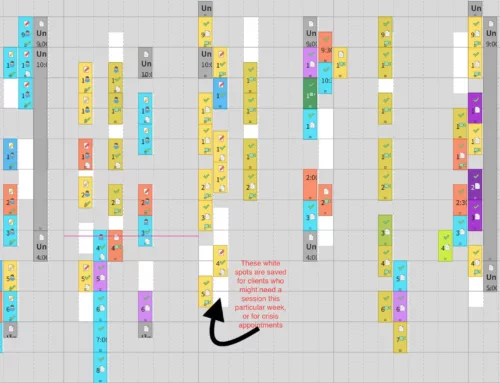Is counselling an effective therapy?
Effective therapy is no accident. But many people hesitate to seek help for life’s challenges or to address psychological conditions because they are afraid counselling won’t work. This is understandable. In the modern era – since the twentieth century at least – we have learned to expect that you can see your doctor and she or he will prescribe something, usually a medicine or a simple surgical procedure, that will make the problem go away.
But effective therapy or counselling seems different to these medical interventions in several respects.
Someone who has never seen a psychologist or counsellor could straight away think of some of these differences, and why they might be a barrier to getting started:
- It takes more than one visit, so perhaps it’s going to be expensive
- Nobody I know talks about having done it, so I don’t know what happens in counselling
- I don’t know how it works. At least with medicine I know it affects the chemicals in your body to set things right.
- Even if it was quick, and I knew what happened in counselling and had some idea of how it’s supposed to work, how would I know it was working for me? Mental distress is not tangible or visible like a skin condition or a bacterial infection, where even people other than the patient can see or hear the difference.
Would it surprise you to know that psychotherapy is actually more effective than many medical treatments?
A couple of paragraphs of (painless!) statistics
Scientists use a statistic called effect size to be able tell how much more effective one treatment is than another (or than no treatment at all). It is used in health and medicine to tell you whether one treatment offers any benefits, in education to demonstrate whether a new teaching approach or resource improves students’ results and in agriculture to examine whether a breeding, crop management or fertilization strategy increases yield or reduces disease. As you can see from those examples, one of its main strengths is that you can use it in ‘real world’ or field research as well as in laboratory studies.
In the world of medicine, authorities such as the United Kingdom’s National Institute for Clinical Effectiveness (NICE) provide a guideline of achieving a moderate effect size of 0.5 to reveal a minimally important difference (or MID)1.
A MID, in layman’s terms, is a difference that most patients would notice. So this guideline of an effect size of 0.5 tells us that the treatment or procedure makes a difference that you’d notice. For example when a patient says, “my sinuses have cleared” or “it’s hurting a lot less” or “I can stand comfortably”.
Makes sense doesn’t it? Nobody is interested in a difference that they can’t notice. So this is the standard NICE requires to recommend medical interventions like spinal surgery and arthritis medication, but also for psychological treatments.
So how does psychotherapy fare on that measure?
Very well it turns out. Extensive reviews of psychotherapy studies consistently produce effect sizes averaging 0.8. So in brief, if you complete a course of psychotherapy, there’s a 79.2% chance that you will end up better off than the average person who didn’t seek treatment. This is with the ‘average’ therapist.
Can I get effective therapy at the ACT of Living?
A little history first. Ever since I started practising counselling in 1994, I’ve been interested in questions like “Did the client get better?” “How much better?” “What could I do to make what I do more helpful?”. To me, asking these questions seemed obvious. Possibly that’s because i had spent much of the previous decade working in a sales environment where success and failure are tangible and binary – you either sold the widget or not! It’s not quite that straightforward in the field of mental health, but putting myself in the shoes of a client, I figured there would have to be a way to measure when a client detects a minimally important difference.
Fortunately my curiosity led me to a group of researchers interested in the same questions. They had developed a couple of simple tools to measure when clients had improved or gotten worse (Outcome Rating Scale or ORS), and how helpful they found the therapist they worked with (Session Rating Scale or SRS) (because the latter had proved to be a major factor in improving the former). So from 2001 I started using these simple tools and tracking the effectiveness of the work I did.
Naturally, when I founded The ACT of Living, I wanted to make sure that the work we did with our clients would be as effective as possible. Up until this time I’d been practising what you might call “effectiveness measures 1.0”. With more and diverse practitioners coming on board at ACT of Living it was time to find something a bit more sophisticated, and at least as reliable as the old measures.
Effectiveness measures 2.0
Then in 2013 I came across ACORN – A Collaborative Outcomes Resource Network. ACORN coordinates the collection and processing of massive numbers of outcome and alliance questions administered by therapists in behavioral healthcare organizations, educational settings and community health care including private practice. As of the date that I am writing this post, May 25, 2017, ACORN has collected data from over 700,000 cases, with 76% of these clients being in the clinical range when they started therapy.
We commenced using the ACORN tools in late 2013, and our Practitioners have used them with each client since then. Using these tools allows us to be able to tell:
- when a client is improving,
- when a client is not improving, and
- when a client is deteriorating.
This last point is really important, because research has shown that in psychotherapy, regardless of the kind of clients, their diagnoses, the counsellor’s qualifications or the counselling setting, approximately 7% of people who start therapy will actually get significantly worse. Obviously we want to minimise that, so if we know that that deterioration has started to happen we can change the approach we use with the client, or refer them to a more suitable therapist. I hope you can see that this will save you time, money and heartache.
How effective is therapy at The ACT of Living?
Considerably more than at the average counselling setting in the ACORN database. Since 2008 through to 2017, therapists in the ACORN database overall have produced an effect size of 0.78 for the clinical cases they’ve seen. Across 2015, therapists at the ACT of Living produced in effect size on their clinical cases of 0.99.
So if we say the average ACORN therapist is like an average therapist anywhere else, what this means is 79% of the time you will better for having seen them compared to just waiting to get better.
Whereas if you see a therapist at The ACT of Living, 84% of the time you would have been better off for having seen them. Five percent may not seem much, but of course if you were one of the five percent, there’s a 100% chance you’d be happier about it!
But there’s even better news. Across 2016 for clients whose initial scores put them in the clinical range (think of this as severe distress) therapists here at The ACT of Living produced an effect size of 1.15.
What this means in percentage terms is that you’d now be better off 87% of the time with us than if you hadn’t sought therapy. Or if you’d seen an ACT of Living therapist in preference to an average therapist, you increased your chances of reliable improvement by 10%.
Not only that, but your chance of getting significantly worse, instead of being 7% would only have been 2%. And the rate of improvement for our 2016 clients was faster than for those seeing the “average” therapist – by more than a factor of two times.
ACT of Living is an award-winning clinic
Recently Dr Jeb Brown, director of the Center for Clinical Informatics which coordinates the databases for the ACORN network, awarded The ACT of Living an acorn Center of Excellence (ACE) award for our achievements over 2015 and 2016. He had this to say about the 2016 results:
“…all of the therapists [at ACT of Living] would be classified as “Highly Engaged” in FIT [Feedback Informed Treatment] and use of deliberate practice. They are in the upper 15% of therapists.
Your results exceed the gains reported in this study, which are already large. Your effect size increased from .99 in 2015 to 1.15 in 2016. This result in 2016 places you in the upper 5% of all sites using the ACORN platform.”
Can we help you?
If you’re looking for a counsellor, I hope you’ll feel more reassured that by seeing an ACT of Living Practitioner you’re giving yourself the best chance of improving your situation. To speak with one of our psychologists, email info@actofliving.com.au, phone 03 9939 9437 or just click here to complete a self-referral form.
Julian McNally
Footnotes
- Details on MID and ES from http://www.pocog.org.au/doc/MID%20FAQ_Dec2014.pdf
- It’s just a coincidence that the 79% figure is close to the ES of 0.8. Effect size can be higher than 1.0, but percentage of course cannot be greater than 100%. So an ES of 0.5 means you’re better off than 73% of untreated people, for an ES of 1.5 the figure is 92%





